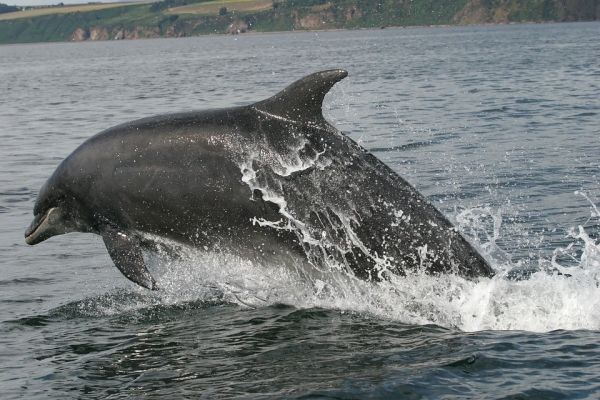More than 1,000 bottlenose dolphins live in the Indian River Lagoon year-round. This estuarine system along the southeast coast of Florida is a narrow and convoluted ecosystem with interconnected bodies of water, a handful of ocean inlets, and numerous small rivers, creeks and canals that release freshwater into the lagoon. While this population of dolphins in the lagoon has been studied extensively, what they do at nighttime is still a mystery.
Researchers from Florida Atlantic University’s Harbor Branch Oceanographic Institute in collaboration with Seven Degrees of Mapping LLC, and Hubbs-SeaWorld Research Institute, are the first to use satellite telemetry on this dolphin population, providing unique insights into their behavioral ecology during the overnight hours. Detailed information about their nocturnal movements and habitat use will give scientists a more complete ecological understanding of this population. These dolphins face many direct and indirect threats including boat strikes, entanglements, and environmental contamination.
Results of the study, published in the journal Animal Biotelemetry , provide the first documentation of Indian River Lagoon dolphins regularly leaving the brackish waters of the estuarine system and, not only traveling into the ocean, but swimming substantial distances – up to 20 kilometers – up freshwater rivers, creeks, and canals. These journeys do not appear to be extended stays in freshwater, which can be detrimental to dolphin health, but instead involve many brief trips upriver. Findings reveal that they have a larger range that encompasses more habitats than previously thought.
The study also highlights how much variation occurs within a population – researchers found individual differences with almost every aspect studied in these dolphins. Individual spatial use varied by dolphin, with home ranges and core areas of different sizes spaced throughout the southern region of the lagoon. Researchers also discovered extensive individual variation in niche preferences.
Read more at Florida Atlantic University
Photo Credit: 272447 via Pixabay


